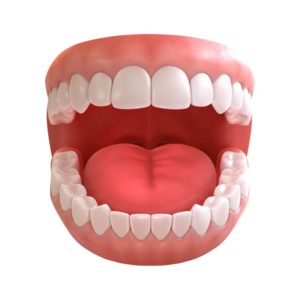
Can you love vegetables if you’ve never grown your own in a garden before? Certainly, but when you put effort into nurturing tomatoes, carrots, and bell peppers of your own to serve to your family, your appreciation for these foods is likely to elevate.
This concept can be applied in other areas, even oral care. When you are young, and maybe even now, you are taking care of your teeth because someone relentlessly told you to. But when you understand other parts of the mouth and the roles they play, it can make you more invested in taking care of yourself and your oral hygiene.
Keep reading to learn more about your mouth from your dentist in Highland Park.
What Is the Purpose of Temporomandibular Joints?
This part of the mouth is not well-known, although you may be familiar with the letters TMJ. Your two temporomandibular joints facilitate your ability to chew, speak, and swallow. They also enable your mouth to open and close, as well as allow you to move your lower jaw forward and side to side.
These joints are located on both sides of your head near your ears and work together with your jawbone, facial muscles, and ligaments. Any disruption to the synchronization of this pair, which can happen if you grind your teeth at night, can result in facial pain, difficulty in chewing, and jaw stiffness.
What Benefits Do My Teeth Get from My Cheeks, Lips, and Tongue?
Your lips and cheeks contribute to everything from forming your facial expressions to breathing and speaking. They also keep food and saliva in your mouth while you chew. These strong muscles brace your teeth to keep them in the proper position.
The tongue is a powerful muscle that facilitates chewing, swallowing, speaking, and tasting food. Taste buds, sensory receptors on your tongue, enable you to enjoy the food you eat. In fact, the human tongue can have up to 10,000 taste buds, which help you detect sweet, salty, bitter, and savory flavors.
The pressure the tongue applies within the mouth helps the oral cavity maintain its shape and keeps the teeth properly positioned.
What Is the Function of My Alveolar Bone, Gums, and Salivary Glands?
The alveolar bone is another one of the less-talked-about parts referenced in this post. The roots of your teeth anchor them in your jawbone. The alveolar bone surrounds the roots to stabilize the teeth.
Your mouth’s gum tissue holds your teeth in place and protects the roots from decay. You may be familiar with gum disease, and the main symptoms include swelling and chronic bleeding. These warning signs are important because unchecked gum disease can lead to tooth and bone loss.
You have six salivary glands that produce the clear liquid known as saliva, which is made up predominantly of water and contains substances that break down food to begin the digestive process. Saliva also moistens your mouth to help with speaking, chewing, and swallowing.
Plus, it washes bacteria from your teeth and gums. The proteins and minerals in saliva play a vital role in protecting the enamel, as well.
Taking care of your teeth is crucial, so keep doing what you’re doing in that regard. But, now that you are a bit more familiar with some other parts of the mouth, maybe you’ll want to ensure that all components of your smile are doing well. Rinse with an antimicrobial mouthwash, brush your tongue and your gums, and visit your dentist in Highland Park twice each year so they can check your entire mouth for signs of disease in addition to providing the thorough cleaning that will keep your oral health at a stellar status.
About the Author
Dr. Girish Sandadi planned to be a medical doctor at first, but he was soon drawn to dentistry because he enjoyed the challenge of replicating the size, shape, and appearance of teeth while also making sure they functioned well. He earned his Doctor of Dental Surgery at the University of Michigan. A married father of two, Dr. Sandadi loves cooking, reading, and painting with his family. If you want to learn more about any parts of the mouth, be sure to ask him during your next dental cleaning and exam. You can make an appointment on his website or by calling (214) 528-9990.
